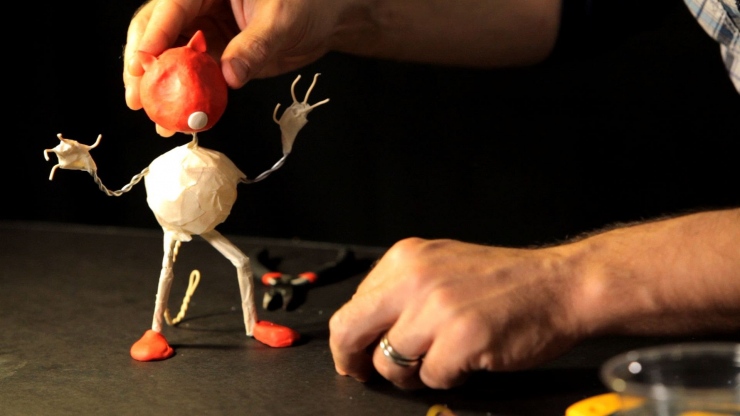Clay animation or claynimation is the use of clay to create characters and animate the storyline. Will Vinton coined the term and clay has been used by artists since 19th century as a medium of expression. Clay is useful for painters to define what shapes that they want to show on their sculptures. The first claynimation film is The Sculptor’s Welsh Rarebit Dream (1908). When making a claynimation film, you need two elements, the stop-motion animation method and the clay-like material, specifically plasticine. William Harbutt created plasticine in 1897 and he was a teacher in the sculpting class. Plasticine gave him a medium that he could work with, because it is workable and don’t dry out. Plasticine is essentially a combination of petroleum jelly, aliphatic acids and calcium-based salts. Plasticine is relatively resistant to heat and when left in open space, it will never dry out. When making a claynimation, you should consider implementing the stop motion animation method.
Through various un-animated sculpted objects, you should be able to create an illusion of moving characters. It is clear that the whole process can be quite time consuming, if we want to create characters with smooth movements. Objects on adjacent frames often seem identical to untrained eyes, but changes should be subtle to ensure smooth movements on the screen. You need to complete the whole one frame at a time, which can be quite difficult. Claynimation is clearly a time consuming and tedious process and you need to invest a significant amount of effort and time for even a short film. But, one positive thing about claynimation is that the whole process is relatively affordable compared to other film- and animation-making projects. With proper uses of editing software, digital cameras and armature, you can often greatly reduce the production time, while increasing the overall quality.
Armature is essentially wire frame to support your clay characters and objects. It can be seen as the wire skeletal structure. With armature, it is easy to re-use, replicate and duplicate characters. As an example, a character may have dozens of armatures, so the animation process can be made much more quickly. The shape and form of the characters should also be quite identical and you don’t need to overly handle each character.
Because claynimation is based on the stop-motion method, you need to have good digital camera. Simple point and shoot digital camera should be enough for amateur, short film projects. For professional work, you need at least a DSLR to ensure that each detail of your character and object can easily be seen by the audience.
Editing software is also essential and this could greatly increase your ability to shorten the production and enhance the overall quality. You may change the angles of the characters digitally. You may also correct mistakes, remove imperfections and add effects to your claynimation frames using the editing software. For amateurs, it will be very hard to create a claynimation project by relying on the actual movements of the characters.


























Add comment